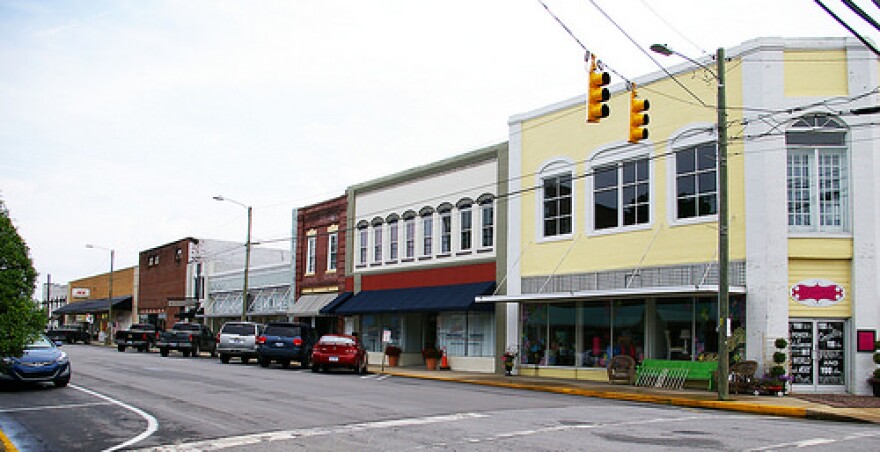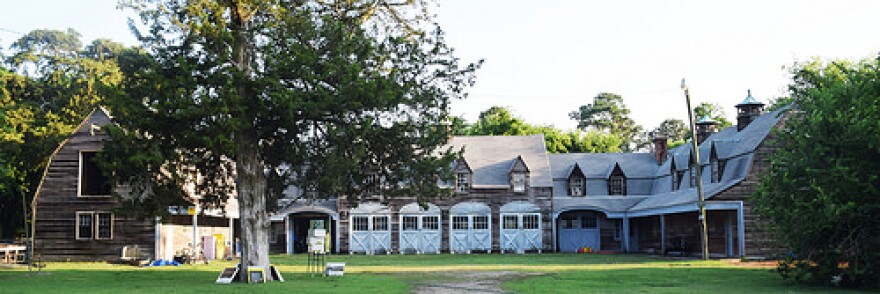North Carolina is full of historic sites. Approximately 75,000 properties are on the National Register of Historic Places, according to North Carolina Department of Cultural Resources.
Now, the National Register has added 15 more historic places from the state. The sites include individual properties and districts. They range across the state from the Belhaven Commercial Historic District in Beaufort County to the old Ashe County Memorial Hospital.
"North Carolina is a leader in the nation's historic preservation movement and the National Register is a vital tool in the preservation of our state's historic resources" said Susan Kluttz, Secretary of the North Carolina Department of Cultural Resources.
Explore the map below to find the location of each new historic site in North Carolina:
Or take a look at the list to find out more about the sites according to their region in the state:
Eastern North Carolina
Carter-Simmons House, Albertson vicinity, Duplin County
The house was constructed as the plantation house of Alexander Carter in the first decade of the 19th century. In 1851, Daniel W. Simmons purchased the house, which led to its reduction to a one-and-one-half story house with a front porch. It would become one of the most intact antebellum examples of a coastal cottage extant in Duplin County.
Belhaven Commercial Historic District, Belhaven, Beaufort County

As Belhaven's primary commercial center, the district comprises 13 largely intact buildings erected to house banks, drug stores, general stores, and a movie theater. It represents the town's 65-year period of commercial development in the 20th century.
Flyway Club, Knotts Island, Currituck County

Flyway Club is a rare example of the remaining fowl hunting lodges established in the early 20th century in the northeast corner of the state. The lodge is composed of a large farm building from the late 1920s and a large two-story, multi-gabled hunting lodge from 1960. It stands on the east shore of the Currituck Sound. The farm building is a local example of an outbuilding designed to contribute to the operation of the estate and to house workers who labored at Flyway Club.
Central North Carolina
Carolina Casket Company, High Point, Guilford County

The three-story brick building's architecture represents the distinctive design of slow-burn, heavy-timber construction. Constructed in 1929, the building is made of load-bearing brick exterior walls, a shallow gable roof, rows of large multi-pane metal industrial windows, two-layer wood floors, and wooden support posts and beams.
Coleman-Franklin-Cannon Mill, Concord, Cabarrus County

The mill was one of the first African American owned and operated textile mills in North Carolina. It was established in 1898 by Warren Clay Coleman, one of the state's wealthiest black businessmen at the time.
Chapel Hill Historic District Boundary Increase and Additional Documentation, Chapel Hill, Orange County

Originally listed in the National Register of Historic Places in 1971, this new nomination provides information on the growth and development of the university and district specifically from 1920 to 1964. It also gives an architectural overview of the district from 1905 to 1964, starting with the date of construction for the oldest building in the boundary increase.
James H. and Anne B. Willis House, Greensboro, Guilford County

The Willis House represents distinctive characteristics of modern house design in its architecture. This includes long, low front gable roofline, expansive floor-to-ceiling windows, an open floor plan, and an exposed-beam structural system.
R. F. Outen Pottery, Matthews, Mecklenburg County

The property is locally significant for the handmade pottery operation of Rufus F. Outen from 1952 to 1965. It is also important for the design of its 1952 oil-burning rectangular downdraft kiln. Outen produced pieces that were based on historic pottery designs, like butter churns, crocks, pitchers, rabbit water bowls and pots.
Erwin Commercial Historic District, Erwin, Harnett County

The district includes 13 early to mid-20th century brick commercial buildings that chronicle the mill town's early history, beginning with its founding in 1903 for Erwin Cotton Mills, a textile company owned by the Duke family of Durham. The commercial district served townspeople who were primarily workers at the mill, as well as farmers in the surrounding area. This was possible because the district had both service and retail establishments.
Westview Cemetery, Wadesboro, Anson County

The cemetery is located on the edge of the town's African American neighborhood. It is likely the oldest extant historic resource associated with Wadesboro's African American community. The cemetery was established in 1898 by a black burial club, but oral tradition maintains that the area was already serving as the town's black cemetery before then.
Dr. Ezekiel Ezra Smith House, Fayetteville, Cumberland County

Dr. Ezekiel Ezra Smith was a leader in developing the State Colored Normal School in Fayetteville, now Fayetteville State University. It was the first public normal school for African American teachers in North Carolina and the first such state-sponsored teacher training institution in the South. The school was founded in 1867 as the Howard School. For nearly 50 years, Dr. Smith served as principal of the school. In 1902 he purchased two city lots and had the large Queen Anne-style house built for his family, where they resided from 1902 to 1909.
Western North Carolina
Dillard B. and Georgia Sewell House, Penrose vicinity, Henderson and Transylvania counties

The house was constructed as a summer home in the vicinity of the rural Penrose community in 1924. It represents the distinctive characteristics of the Rustic Revival with its exposed stone interior walls, a wood shingle-clad roof, inset porch, and stone patio.
Stone Hedge, Tryon vicinity, Polk County

The property includes a two-story main residence reminiscent of a rustic Italian villa, one-story guest house and two-story pool/guest house. All of these elements are built from stone. It was built in 1935 as the rural estate for Thomas and Lillian Costa.
Ashe County Memorial Hospital, Jefferson, Ashe County

The building represents the political history of Ashe County as a largely intact public health facility constructed through the efforts of local leaders. These leaders raised funds to supplement the contributions of the Works Progress Administration and the Duke Endowment near the end of the Great Depression. It served as the county's hospital from 1941 to 1970 when a new, modern hospital was opened south of Jefferson.
United States Post Office, Kings Mountain, Cleveland County

The well-preserved Colonial Revival-style building erected in 1939-1940 remained in use as a post office until November 1986, when postal service operations were relocated to a newly-built post office building. Since 2000, the City of Kings Mountain has used the building to house the Kings Mountain Historical Museum.



